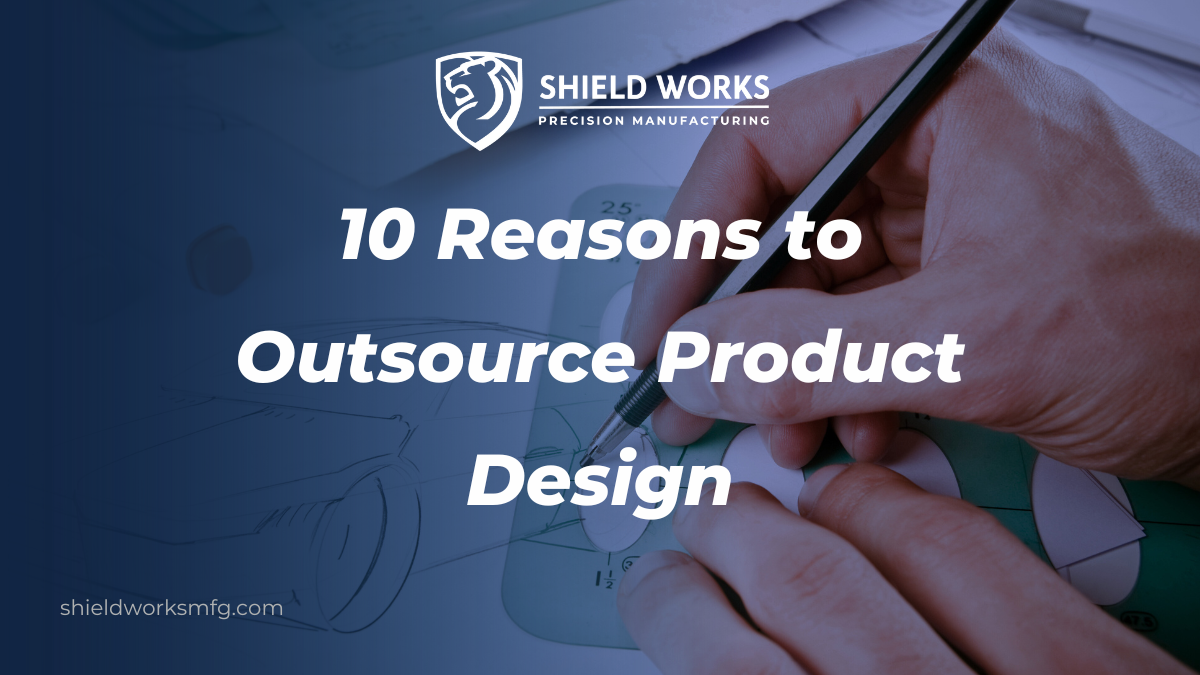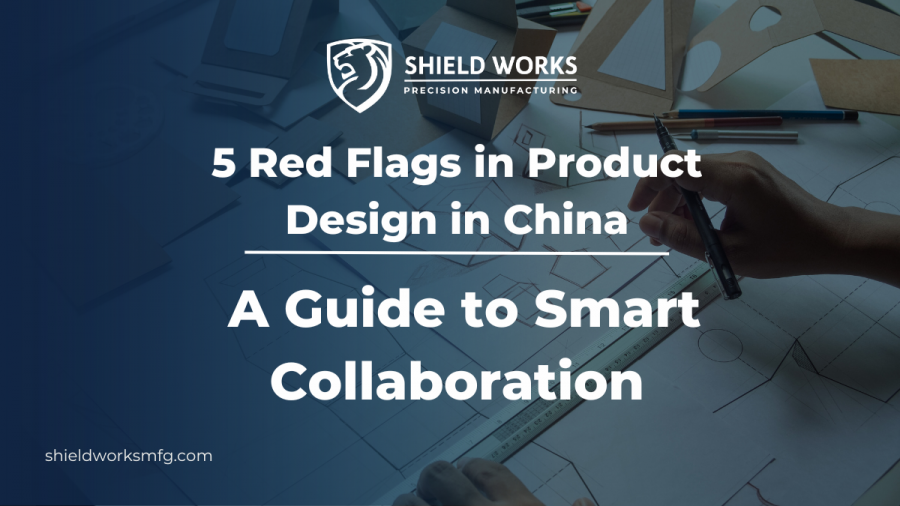Posts Tagged ‘Product Design in China’
10 Reasons to Outsource Product Design

In today’s fast-paced and ever-evolving market, businesses are continuously seeking innovative ways to stay ahead of the competition. One strategy that has gained significant traction is outsourcing product design. Whether it’s PCB design or other intricate product development tasks, outsourcing allows companies to leverage external expertise to enhance their offerings and streamline their operations. Here, we delve into eleven compelling reasons why outsourcing product design can be a smart move for your business.
1. Access to Specialized Expertise
Outsourcing product design allows you to tap into a pool of specialized expertise that may not be available in-house. Professional design agencies or freelance designers bring a wealth of knowledge and experience to the table. These experts understand the latest trends, tools, and technologies, ensuring that your product design meets high-quality standards while being innovative and functional.
2. Cost Efficiency
Hiring an in-house design team can be expensive, especially when you factor in salaries, benefits, and equipment. Outsourcing allows you to pay only for the services you need, which can significantly reduce your overall expenses. With access to skilled designers at a lower cost, you can allocate your budget to other crucial areas, such as marketing or production.
3. Faster Time to Market
Outsourcing can speed up the design process. Design agencies and freelance designers are typically adept at managing timelines and ensuring that projects are completed on time. With fewer internal resources required, your team can focus on other critical tasks, allowing you to launch your product sooner and gain a competitive edge in the market.
4. Focus on Core Competencies
By outsourcing product design, you free up internal resources to focus on your company’s core competencies. Rather than diverting your attention to the intricacies of design, you can concentrate on other critical aspects of your business, such as sales, marketing, and customer support. This increased focus leads to better overall business performance.
5. Scalability
As your business grows, so do your design needs. Outsourcing offers the flexibility to scale your design efforts without the complications of hiring and training new staff. Whether you need to expand the design team for a specific project or temporarily downsize, outsourcing allows for agile adjustments, making it easier to meet fluctuating demands.
6. Risk Mitigation
Product design is a complex process that carries a degree of risk. Outsourcing helps mitigate some of these risks by ensuring that you have a team with the expertise to identify potential issues early. By working with experienced designers, you reduce the likelihood of costly mistakes and design flaws that could affect the success of your product.
7. Enhanced Creativity and Innovation
When you outsource product design, you’re more likely to benefit from fresh, innovative ideas. External designers can bring new perspectives and creative solutions to your product development process. Their diverse experiences often lead to more unique and forward-thinking designs that could set your product apart in a crowded market.
8. Improved Product Quality
Professional design agencies have established systems and processes in place to ensure the highest quality work. With outsourcing, you can expect rigorous quality checks and feedback loops, which helps improve the overall design process. Moreover, if any adjustments or revisions are necessary, external designers are equipped to handle them efficiently without compromising the final outcome.
9. Access to Global Talent
Outsourcing opens up opportunities to work with talent from around the world. This global reach allows you to find the best designers who specialize in the specific product categories or industries relevant to your business. Whether you need a design expert from Europe, Asia, or North America, outsourcing ensures that you have access to a diverse pool of skills and perspectives.
10. Competitive Advantage
Outsourcing product design can significantly elevate your business’s position in the market by bringing innovative and high-quality products to the forefront. External design teams provide not just expertise but also fresh perspectives that can lead to unique and differentiated offerings. This edge is critical in crowded markets where innovation is a key driver of consumer choice.
Partnering with a reliable and experienced company like Shield Works, known for its high-quality contract manufacturing and product development services, can significantly enhance your operations. As a British-owned and managed entity, we ensure stringent quality control and consistent delivery. Contact us today to discover how we can deliver value and quality, making your investment worthwhile.
5 Red Flags in Product Design in China: A Guide to Smart Collaboration

In the world of manufacturing and design, China holds a pivotal position, especially when it comes to product design and industrial design. Collaborating with Chinese companies offers a plethora of advantages, from cost savings to access to a vast manufacturing ecosystem. However, like any business venture, especially in a foreign landscape, it’s vital to proceed with caution and be aware of potential pitfalls. Understanding the red flags in product design in China is essential for establishing a smart, effective, and mutually beneficial collaboration. Here, we’ll explore five critical red flags to watch out for, ensuring your venture into the Chinese product design sector is both successful and rewarding.
Lack of Clear Communication and Language Barriers
A major hurdle that often derails otherwise promising collaborations in the realm of product and industrial design with Chinese partners is the obstacle of communication challenges, including significant language barriers.
The intricacies of product design demand precise, nuanced communication to ensure that every detail of a project’s requirements, expectations, and limitations is thoroughly understood by all parties involved. When there’s a disconnect in this critical area, the project can suffer from misinterpretations, leading to design errors or delays.
Relying solely on translators is not always a failproof solution, as the subtleties of technical language and industry-specific jargon can be lost in translation. Opting for a design partner with a strong command of your language, or who employs skilled bilingual professionals proficient in the technical language of design, can greatly diminish these risks.
Inadequate Understanding of Intellectual Property Rights
When venturing into the Chinese product design market, a critical aspect to be wary of is the potential for gaps in understanding or respect for intellectual property (IP) rights. The significance of safeguarding your designs cannot be overstated, as failing to do so could lead to dire consequences, including the loss of your competitive edge or legal battles that can be both time-consuming and expensive.
It’s imperative to engage with firms that recognize the importance of IP protection and are proactive in taking steps to secure your creations. This means ensuring that any potential partner is willing to engage in comprehensive discussions about IP and agree to legal safeguards such as non-disclosure agreements (NDAs) that protect your interests.
Additionally, it’s beneficial to have a strong grasp of China’s specific IP laws, which can differ markedly from those in other countries. Understanding these laws enables you to navigate the legal landscape more effectively and to set up additional protective measures if necessary.
Insufficient Portfolio or Lack of Relevant Experience
The vast world of industrial and product design encompasses a range of specializations, and it’s not uncommon for a firm to excel in one area while lacking expertise in another. This differentiation is particularly significant if your project requires specialized knowledge, such as in wearable technology or sustainable packaging solutions. Evaluating a firm’s previous work critically and probing into their experience with projects analogous to yours is key.
This exploration should extend beyond surface-level portfolio presentations to include discussions on methodologies, design challenges faced, and how they were overcome. Asking for references or detailed case studies can also shed light on the firm’s capabilities and the results they’ve achieved for past clients. These steps are essential in assessing whether the firm has the requisite skills and understanding to turn your vision into a tangible product. It’s equally important to gauge the firm’s adaptability and willingness to research and tackle domains they are less familiar with, provided they show a strong foundational skill set.
Overpromising and Under-Delivering
When evaluating potential design partners in China, one should approach overly optimistic projections with a healthy dose of skepticism. Firms that guarantee unusually fast turnarounds, exceptionally low costs, or extraordinarily ambitious outcomes without a solid, detailed plan may be overlooking the complexities inherent in product and industrial design projects.
True professionalism is reflected not in making lofty promises but in setting realistic expectations grounded in experience and an in-depth understanding of the project scope. It’s crucial to distinguish between genuine confidence backed by evidence, such as previous successful projects similar to yours, and mere boastfulness without substance.
A credible design firm will engage in transparent conversations about the challenges your project may encounter and how they plan to address them, rather than bypassing these discussions with assurances that sound too good to be true.
Pricing That Is Too Good to Be True
Extremely low pricing often signals potential compromises in critical areas such as material quality, detail to craftsmanship, or adherence to timelines. These compromises can not only affect the final product’s integrity but also lead to increased costs in the long run due to necessary redesigns or quality control issues.
It’s advisable to conduct a comprehensive comparison of quotes from various design firms, paying close attention to what is included in each quote. A detailed breakdown can reveal discrepancies in scope, materials, or services that justify cost differences. This step helps in understanding whether a low quote is truly a bargain or a red flag indicating possible hidden costs or substandard service.
Engaging in open discussions with potential partners about how they can offer lower prices can provide insights into their processes, efficiency, and resource management. Some firms may have legitimate reasons for lower costs, such as economies of scale, in-house fabrication capabilities, or special supplier relationships. However, the emphasis should always be on ensuring that cost savings do not come at the expense of the project’s quality and your overall objectives.
If you are embarking on a product design journey in China and are seeking a reliable and experienced partner, look no further than Shield Works. As a product development and contract assembly company based in China, we prioritize effective communication, respect for intellectual property, a strong portfolio, and transparent practices. Reach out today to explore how we can collaborate to bring your innovative product concepts to fruition successfully.
